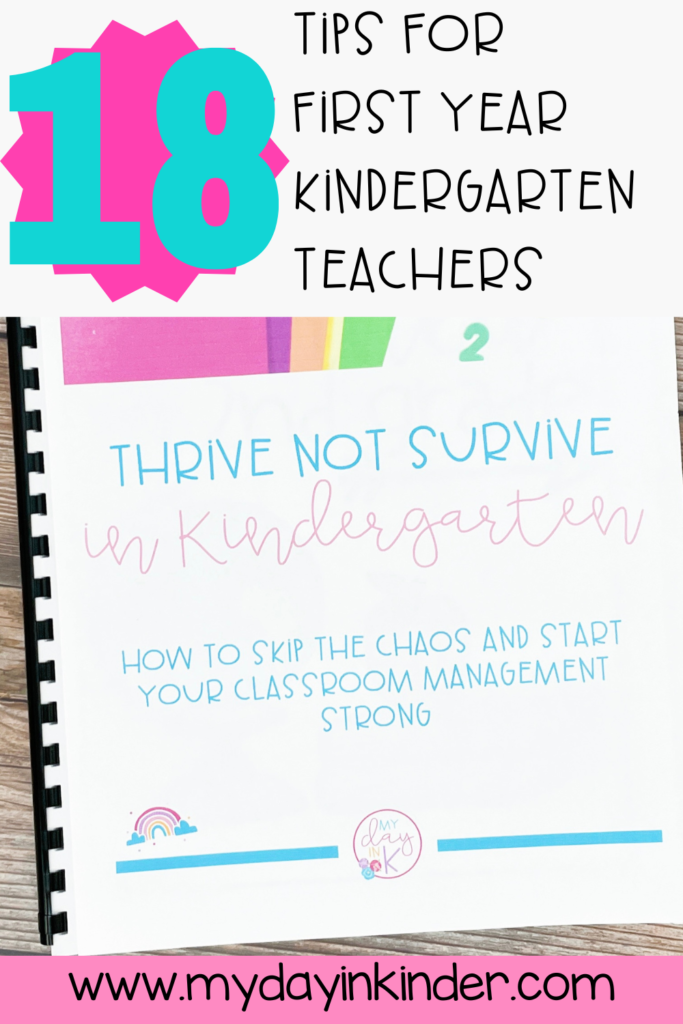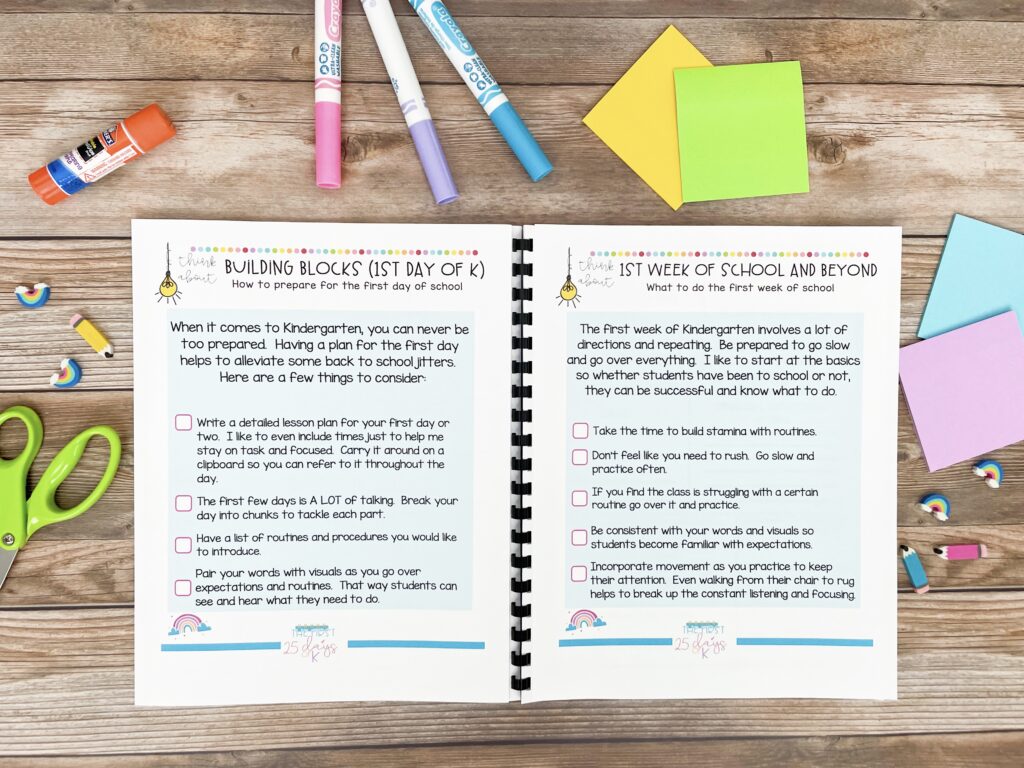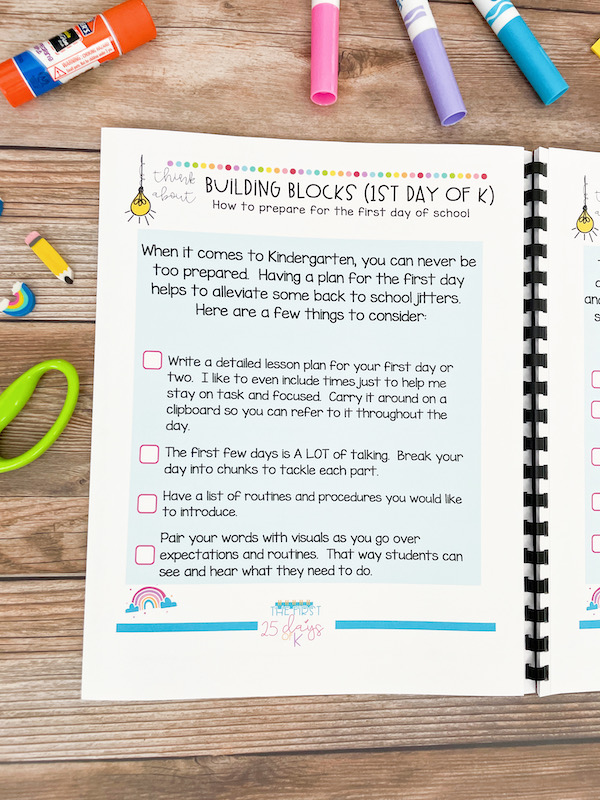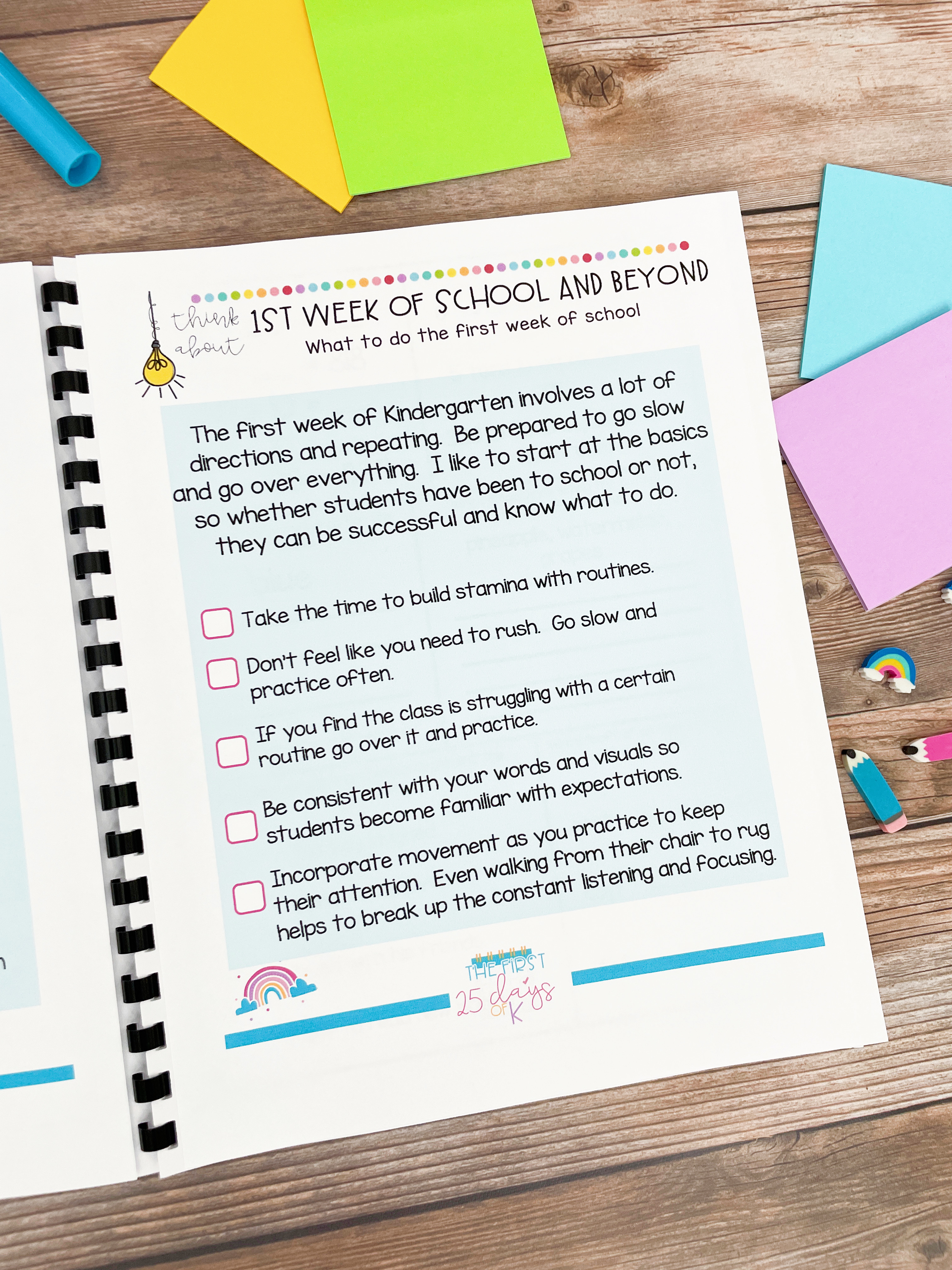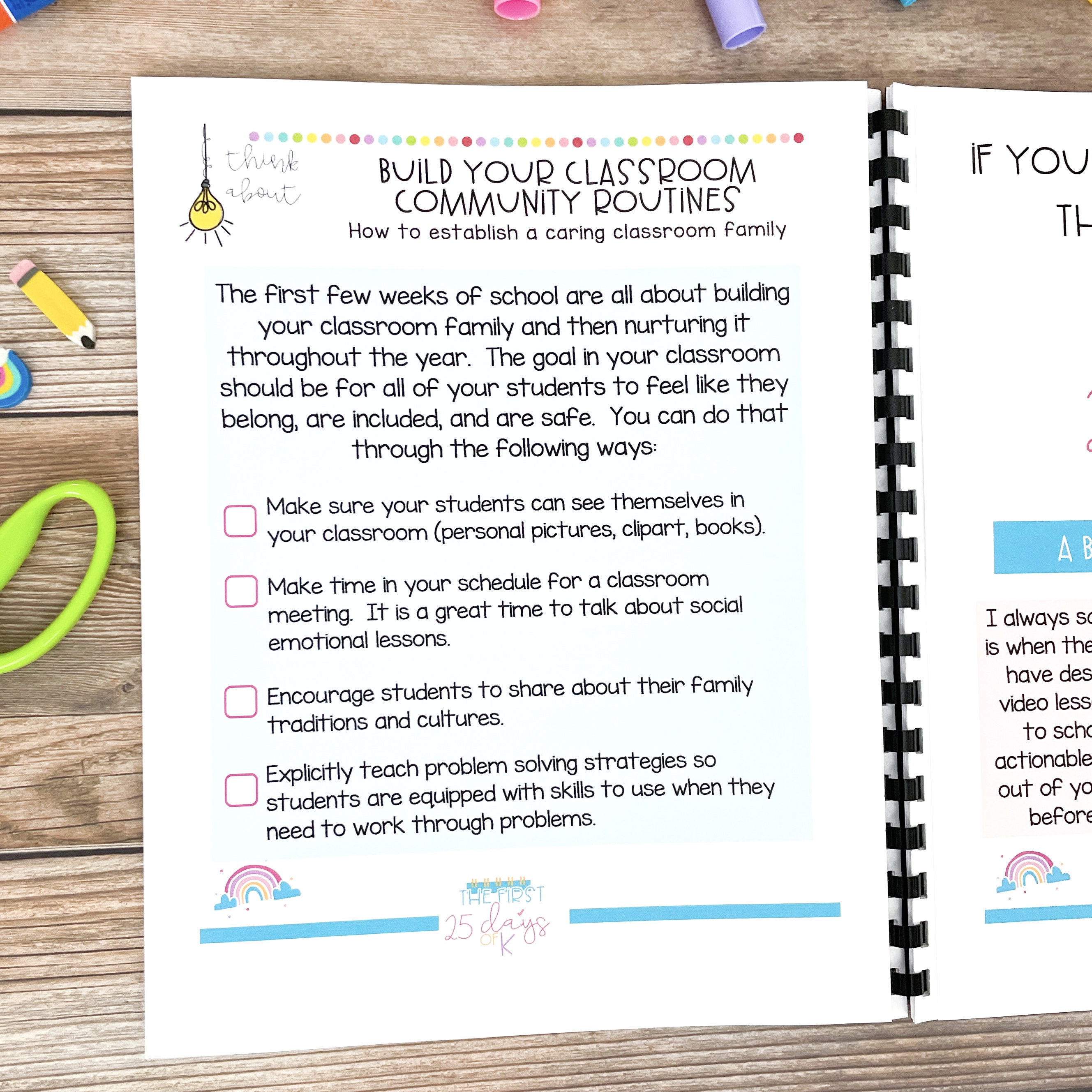Tips for a First Year Kindergarten Teacher: A Summer Preparation Guide
Hello, kindergarten teachers-to-be and veteran teachers! Are you ready for an amazing first year or 5th, 10th, or 20th in the kindergarten classroom? I’ve got some fun and helpful tips for a first year kindergarten teacher or even teachers who may need a little refresher. These tips for a first year kindergarten teacher will get you prepared during the summer break. So, let’s dive in and make sure you’re all set for a fantastic adventure with your kindergarteners!
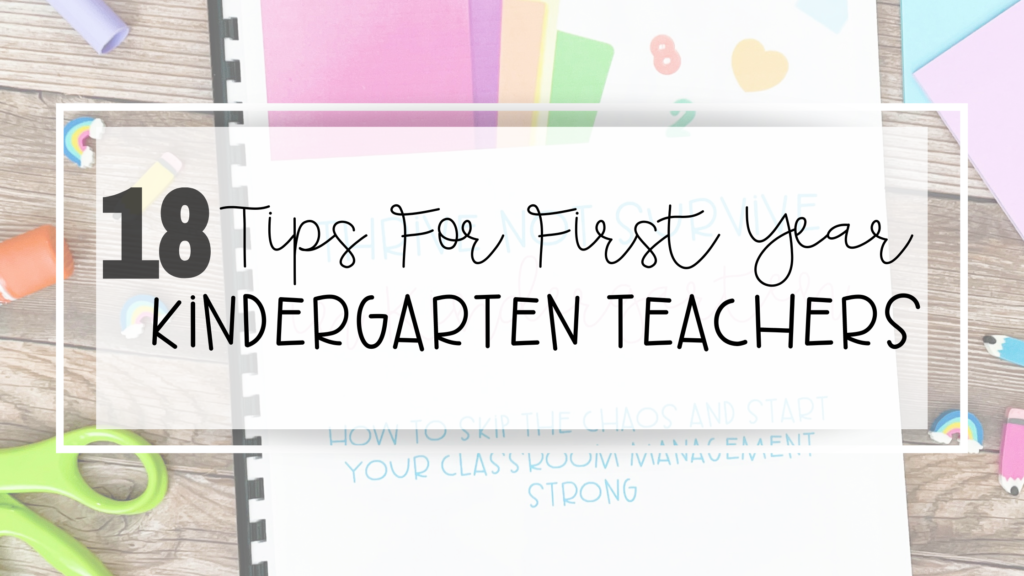
Tips For a First Year Kindergarten Teacher
Once upon a time, I was a teacher of big kids, but then something happened, and I made the leap to kindergarten! It was like stepping into a whirlwind. The students were full of endless curiosity and questions. At first, it was a bit terrifying and, to be honest, completely out of control. But soon, I realized that teaching kindergarteners is like herding cats. (haha, just kidding) I learned that with open arms, a heart full of excitement, and a lot of practice, kindergarten was where I was meant to be.
Whether this is your first year teaching or you’re a veteran teacher transitioning into kindergarten. It is almost like a completely different world in the K-wing in many elementary schools. Not only is the furniture miniature, the students are, too, and there is a lot to learn so you and your little learners can thrive this year. Here are a few tips for a first year kindergarten teacher I wish I knew when I made the transition!
What to Do Before the School Year Starts
Teacher life doesn’t end when students leave the classroom. Although many of us wish we could completely step away from the classroom in the summer, it’s often very difficult to do. We have so much to do before the little learners step into our classrooms; here’s what you can do to create a positive learning environment and prepare for your new kindergarten class.
Set up the Classroom
Infuse your space with vibrant colors or a pastel palette and create a warm, inviting atmosphere. You can even consider incorporating a theme, like an enchanted forest or a superhero hideout, to spark their imaginations. Think about your plan for furniture. Where and how will the dess/tables be set up? What about your small group table? Do you have a specific spot the rug needs to go? Also, the classroom library?
Design Different Zones
Establish dedicated areas for reading, writing, dress-up, and more. These zones provide structure and allow children to explore various activities independently. Use signage and visuals to help students understand what each zone is for and what should happen in each area.
Make a Shopping List
Take stock of your supplies and jot down what you need. From art materials and books to educational toys, ensure you have everything you’ll require for engaging lessons and creative projects. Please do not go spending an arm and a leg on a bunch of supplies. Check garage sales with retired teachers, Facebook marketplace, and thrift shops to find used books, toys, etc. There are many ways to get items cheap!
Set Goals
Think about what you hope to achieve in the first few weeks. Whether it’s fostering a sense of community, building routines, or introducing foundational skills, set clear goals to guide your planning.
Click Here To Join my 4-Day Video Series and learn how to THRIVE, not just survive in the kindergarten classroom.
How to Prepare for the First Day of School:
The first day of school will be here before you know it, and although setting up your classroom is very important to ensure a smooth start, you want to have the first day of school figured out. I promise 20-something kindergarteners running around the classroom for 10 hours without structure and a plan will NOT be fun. So here are some strategies for an organized and exciting first day.
Detailed Lesson Plans
Plan your first day or two with meticulous attention to detail. Include specific times for each activity and keep the plan handy on a clipboard. This will help you stay on track and ensure a well-structured day. Although you may not realize there is a lot you have to cover those first few days, you want to ensure you check everything off your list.
Break the Day into Chunks
Kindergarten schedules can be broken down into smaller time chunks to maintain focus and provide a sense of routine. Transition times can be filled with songs, games, or stories to keep children engaged during transitions.
Introduce Routines and Procedures
Have a list of routines and procedures you want to establish and go over them with your students. Use visuals, such as charts and picture cues, to support understanding and make it easier for little ones to follow along. This leads me to my next tip.
Utilize Visuals
Young children thrive on visuals! Use visual aids, like posters or anchor charts, to illustrate rules, expectations, and daily routines. This will help students understand and remember what is expected of them.
What to Do during the First Week of School
During the initial week, focus on building a strong foundation and establishing a positive classroom culture. This can be done in many ways, but you want students to feel welcome, comfortable, and even feel like they are in their home away from home.
Practice and Perfect Routines
Use this time to practice and reinforce routines and procedures. Take it slow and ensure that students understand and follow each step. Consistency is key!
Go Slow, Practice, and Have Fun
Kindergarten is a time for exploration and fun! Avoid rushing through lessons and activities. Allow plenty of time for play, interactive learning, and getting to know your students. A happy and engaged classroom sets the tone for a successful year.
Address Struggles with Specific Routines
If you notice your class is struggling with certain routines, dedicate extra time to practice and reinforce those areas. Keep a positive attitude and celebrate their progress along the way. I promise you will need to review rules, routines, and procedures throughout the year. Students often leave school for winter break and come back as if they had never been in your classroom before. It happens to the best of us.
Be Consistent with Words and Visuals
Use consistent language and visuals throughout the week to reinforce expectations. This consistency will help children feel secure and confident in their daily routines.
Embrace Movement
Incorporate movement and physical activity whenever possible. Kindergarteners learn through hands-on experiences, so incorporate dance, yoga, or outdoor games to keep them active and engaged.
How to Establish a Caring Classroom Community
Creating a nurturing and inclusive classroom community is essential in kindergarten. Here are some tips to foster a warm and caring environment where students feel valued and supported.
Personalize Your Space
Make your desk or table a reflection of your unique self. Display personal pictures, cards, or objects that showcase your family, interests, hobbies, and things you love. This helps students connect with you on a personal level and builds trust.
Hold Daily Classroom Meetings
Start each day with a classroom meeting where students gather together to discuss plans for the day, share thoughts or ideas, and address any concerns. This time provides an opportunity to strengthen relationships, enhance communication skills, and build a sense of community.
Social-Emotional Lessons
Dedicate time each week to teach social-emotional skills. Explore topics such as empathy, kindness, gratitude, and cooperation. Engage students in discussions, role-playing activities, and interactive lessons that promote self-awareness and positive relationships.
Encourage Cultural Sharing
Create an environment where students feel comfortable sharing their traditions, culture, and backgrounds. Celebrate diversity by allowing students to present about their heritage, share stories, or showcase artifacts. Encouraging an appreciation for different cultures fosters inclusivity and broadens perspectives.
Teach Problem-Solving Techniques
Help students develop problem-solving skills by providing them with strategies to navigate conflicts and challenges. Teach techniques like active listening, compromising, and seeking win-win solutions. Encourage open dialogue, respect for different opinions, and collaborative problem-solving within the classroom.
How to Thrive, Not Survive
To maintain a positive and productive classroom throughout the year, remember these key principles. Reinforce established routines consistently throughout the year. Regular practice helps children internalize expectations and reduces the need for constant reminders. Visual aids remain valuable tools. Display charts, diagrams, and student work to reinforce concepts and provide visual cues for independence. Use clear and specific language when giving instructions. Kindergarteners thrive on explicit directions and benefit from knowing exactly what is expected of them. A positive attitude goes a long way. Celebrate achievements, encourage effort, and foster a supportive and inclusive classroom community.
As you prepare for your first year of teaching kindergarten or even your eleventh, remember that with a little planning and a lot of heart, you are setting the stage for an extraordinary adventure. These tips for a first year kindergarten teacher should make everything a little easier! Enjoy the journey, embrace the laughter and learning, and be the superhero that guides your students through this incredible year. Best of luck, kindergarten teacher, and may your classroom be filled with joy, wonder, and endless possibilities!
Don’t forget to join my 4-Day Video Series and learn how to THRIVE, not just survive in the kindergarten classroom.
